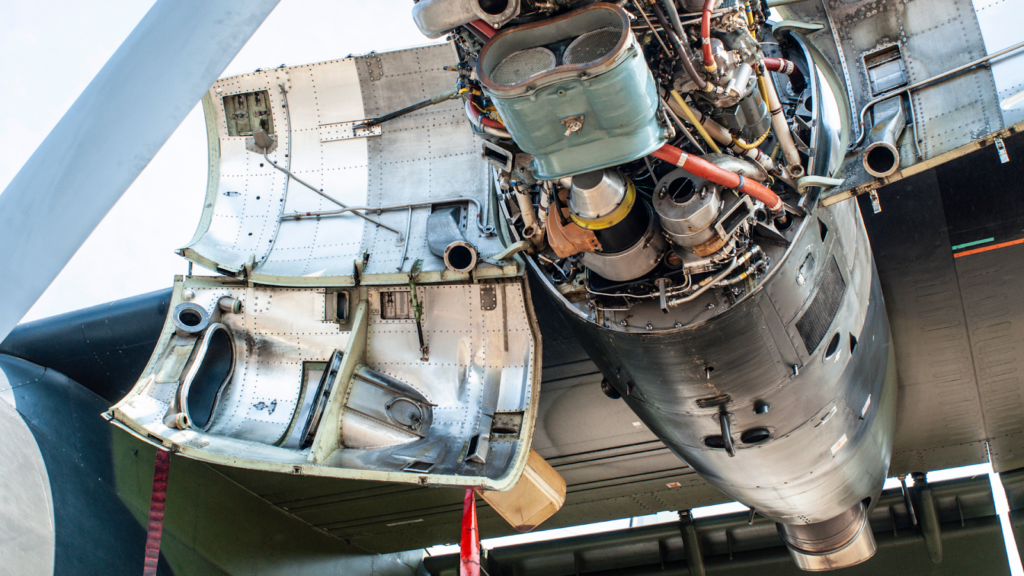MIL-DTL-53072 is a vital specification in the defense sector that outlines the requirements for applying chemical agent resistant coatings (CARC) on military equipment. It covers the entire coating process, from surface preparation to the final inspection, to ensure the coatings on military vehicles and equipment are durable, effective, and can withstand chemical, biological, and environmental challenges. This specification plays a key role in keeping military assets operationally ready and extending their lifespan by providing necessary protection against harsh conditions.
The Importance Of MIL-DTL-53072
MIL-DTL-53072 is crucial for military operations and the upkeep of equipment, ensuring that military assets are durable, long-lasting, and operationally effective. This specification sets strict guidelines for chemical agent-resistant coatings (CARC), allowing military gear to endure tough environments, chemical hazards, and regular wear and tear, which prolongs the lifespan of essential assets.
It also plays a vital role in protecting military personnel by offering better defense against chemical warfare, reducing the risk of damage to equipment and exposure to dangerous substances. Equipment that meets this specification needs less maintenance, is more dependable in combat, and maintains forces ready for action. Additionally, following MIL-DTL-53072 helps in aligning with international allies by standardizing protective coatings, making joint operations more seamless. Ultimately, MIL-DTL-53072’s significance spans enhancing military readiness, safety, and strategic benefits through superior and resilient equipment.
Key Benefits Of Complying With MIL-DTL-53072
Complying with MIL-DTL-53072 offers several significant benefits that contribute to the effectiveness and longevity of military equipment. These benefits not only ensure the operational readiness of military assets but also support broader defense objectives by enhancing the durability and reliability of equipment in various conditions. Here are some of the key advantages:
Enhanced Protection Against Chemical Agents
One of the most critical benefits is the heightened protection against chemical warfare agents. Coatings applied in accordance with MIL-DTL-53072 specifications are designed to resist degradation from chemical agents, ensuring that equipment remains functional and safe for personnel even in environments where chemical threats are present.
Increased Durability and Longevity
The specification outlines procedures for surface preparation, primer application, and topcoat application that collectively contribute to a more durable finish. This durability translates into less wear and tear over time, reducing the need for frequent repairs and replacements, and ultimately extending the service life of military assets.
Improved Operational Readiness
Equipment maintained to MIL-DTL-53072 standards is more reliable and requires less maintenance. This reliability ensures that military units can deploy at a moment’s notice without concern for equipment failure, maintaining a high state of operational readiness.
Cost Savings
While the initial application of CARC systems in compliance with MIL-DTL-53072 may involve upfront costs, the long-term savings are significant. Reduced maintenance requirements, longer intervals between repaints, and extended equipment lifespan result in considerable cost savings over the lifecycle of military assets.
Environmental and Personnel Safety
The specification also considers the safety of both the environment and personnel. By stipulating the use of materials and processes that minimize harmful emissions and exposure to toxic substances, MIL-DTL-53072 promotes a safer working environment for military and maintenance personnel.
Standardization Across Military Assets
Compliance ensures a uniform approach to protecting military equipment, facilitating easier maintenance and interoperability among different units and allied forces. This standardization is crucial for cohesive operation and logistics, especially during joint operations or multinational exercises.
Application Methods For MIL-DTL-53072
The application of coatings in accordance with MIL-DTL-53072 involves a series of detailed steps and procedures designed to ensure the highest level of protection and durability for military equipment. These methods are meticulously outlined to cater to different materials and operational environments, ensuring a robust and reliable finish. Here’s an overview of the key application methods:
Surface Preparation
The foundation of a durable coating system lies in proper surface preparation. This involves cleaning, degreasing, and removing any rust or old paint from the equipment surface. Techniques such as sandblasting or solvent cleaning are commonly employed to achieve a clean, roughened surface that enhances the adhesion of subsequent coatings.
Primer Application
Once the surface is prepared, a primer is applied to provide a protective base layer. Primers used under MIL-DTL-53072 are specially formulated to resist corrosion and enhance the adhesion between the surface and the topcoat. Application methods may vary, including spraying, brushing, or rolling, depending on the equipment’s size and shape.
Topcoat Application
The topcoat, which provides the final color and texture, is applied over the primer. Topcoats are selected based on their chemical agent resistance, durability, and environmental considerations. The application must be even and may require multiple layers to achieve the desired protective qualities and aesthetic appearance.
Quality Control and Inspection
After the application of coatings, thorough inspections are conducted to ensure compliance with MIL-DTL-53072 specifications. This includes checking for proper thickness, adhesion, color, and overall quality. Any defects or inconsistencies must be addressed to ensure the coating meets the stringent standards set forth.
Curing
The final step involves curing the coatings to achieve full hardness and chemical resistance. The curing process varies based on the type of coatings used and may involve air drying or the application of heat. Proper curing is crucial for the longevity and effectiveness of the coating system.
How To Comply With MIL-DTL-53072
Compliance with MIL-DTL-53072 involves a multifaceted approach that includes understanding the specification’s requirements, selecting appropriate materials, and adhering to detailed application and quality control procedures. Here’s a step-by-step guide to ensuring compliance:
Familiarize with the Specification
The first step is to obtain and thoroughly review the latest version of MIL-DTL-53072. This document contains detailed requirements for materials, application processes, and quality assurance measures. Understanding these requirements is crucial for successful compliance.
Select Approved Materials
Use only materials (primers, topcoats, solvents, etc.) that meet the specifications outlined in MIL-DTL-53072. This may involve consulting with approved suppliers who can provide products that are specifically designed to meet or exceed these standards.
Train Personnel
Ensure that personnel involved in the coating process are adequately trained on the specific procedures and quality control measures required by MIL-DTL-53072. This includes training on surface preparation, application techniques, and safety protocols.
Implement Strict Quality Control
Establish a robust quality control process that includes inspection and testing at various stages of the application process. This should cover initial surface preparation, each layer of coating application, and the final inspection to ensure that all aspects meet the specification’s standards.
Maintain Detailed Records
Keep comprehensive records of all processes, materials, and inspections. This documentation should include details such as material lot numbers, application conditions (e.g., temperature, humidity), equipment used, and inspection results. Such records are essential for verifying compliance and addressing any issues that may arise.
Periodic Review and Update
Regularly review your compliance processes and materials to ensure they remain in line with the latest version of MIL-DTL-53072. The specifications can be updated, and staying informed of these changes is critical for maintaining compliance.
Frequently Asked Questions
What is the historical background of MIL-DTL-53072?
MIL-DTL-53072 was developed as part of the U.S. Department of Defense’s efforts to standardize chemical agent resistant coatings (CARC) across military equipment. It evolved from earlier specifications to address the need for improved protection against chemical and environmental damage, reflecting advancements in coating technology and military requirements.
Can MIL-DTL-53072 be applied to non-military equipment?
While designed for military applications, the principles and procedures outlined in MIL-DTL-53072 can be applied to non-military equipment requiring high levels of protection against chemical and environmental stresses. However, compliance is specifically geared toward military standards and requirements.
Are there different versions of MIL-DTL-53072, and how often is it updated?
Yes, MIL-DTL-53072 has undergone various updates to incorporate new technologies, materials, and processes. The frequency of updates depends on technological advancements and the emergence of new requirements in military operations. It’s crucial for stakeholders to stay informed of the latest version.
How does MIL-DTL-53072 contribute to environmental sustainability?
MIL-DTL-53072 includes guidelines for the use of environmentally friendly materials and processes where possible. It promotes the use of coatings that minimize harmful emissions and waste, aligning with broader environmental sustainability goals.
What role do third-party laboratories play in MIL-DTL-53072 compliance?
Third-party laboratories can provide independent testing and certification services to verify that coatings and application processes meet MIL-DTL-53072 specifications. They play a crucial role in quality assurance and compliance verification.
Can compliance with MIL-DTL-53072 reduce operational costs?
Yes, by extending the lifespan of equipment and reducing maintenance needs, compliance with MIL-DTL-53072 can lead to significant operational cost savings over time, despite the initial investment in compliant materials and application processes.
Is training available for organizations looking to comply with MIL-DTL-53072?
Various defense-related and industry organizations offer training programs focused on the specifications and application processes outlined in MIL-DTL-53072. These programs are designed to enhance understanding and ensure effective implementation.
How does MIL-DTL-53072 impact the resale value of military equipment?
Equipment maintained and coated according to MIL-DTL-53072 standards tends to have a higher resale value due to its enhanced durability, appearance, and proven resistance to environmental and chemical stresses.
Are there exemptions or waivers for certain requirements under MIL-DTL-53072?
In specific circumstances, waivers or exemptions to certain MIL-DTL-53072 requirements may be granted, especially when alternative materials or processes meet or exceed the intended protection levels. These are evaluated on a case-by-case basis.
How does MIL-DTL-53072 interface with other military specifications and standards?
MIL-DTL-53072 is often part of a broader suite of specifications and standards governing military equipment maintenance and operation. It is designed to be complementary, ensuring that coatings do not negatively affect other performance characteristics required by additional military standards.

